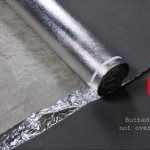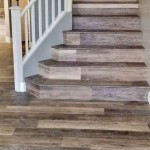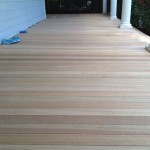How To Install Laminate Flooring on Stairs with Bullnose
Installing laminate flooring on stairs can significantly enhance the aesthetic appeal and durability of your home. Adding a bullnose trim to the edges of the stair treads creates a smooth, rounded finish that enhances safety and elegance. This guide will walk you through the essential steps of installing laminate flooring on stairs with bullnose, ensuring a professional and satisfying result.
1. Prepare the Stairs for Installation
Prior to installing laminate flooring, it's crucial to prepare the stairs adequately. This step involves removing existing flooring, addressing any underlying problems, and ensuring a smooth and level surface for the new flooring.
Begin by removing the existing staircase flooring. Carefully detach any handrails, balusters, and treads, taking note of their placement for re-installation later. Once the old flooring is removed, examine the subfloor for any signs of damage, rot, or unevenness. If necessary, repair or replace damaged sections to create a stable foundation for the new flooring.
Next, smooth out any unevenness in the subfloor. You can achieve this by using a sander or filler. Even the slightest irregularities can affect the overall appearance and stability of the laminate flooring.
Finally, clean the subfloor thoroughly to remove dust, debris, and any remaining adhesive or sealant. This step is essential for ensuring proper adhesion between the subfloor and the laminate flooring.
2. Cutting and Installing the Laminate Flooring
Installing laminate flooring on stairs requires precise cutting and accurate measurements. You'll need to consider the dimensions of each stair tread and riser, as well as the placement of the bullnose trim.
Begin by measuring the width of each stair tread. Cut the laminate planks to size using a circular saw or a jigsaw. Ensure that the planks are cut precisely, as any discrepancy will result in uneven gaps between the flooring and the stair edges.
Next, measure the height of each riser. Cut the laminate planks to size to fit the riser, ensuring that the planks extend slightly beyond the edge of the tread. This overhang will be covered by the bullnose trim.
Start installing the laminate flooring from the bottom of the stairs. Apply a bead of construction adhesive to the back of the first plank and position it on the tread. Ensure that the plank is flush with the edge of the tread. Secure the plank with a few nails or staples.
Continue installing the laminate planks one by one, ensuring that each plank is tightly fitted against the previous one. Use a tapping block to gently tap the planks into place. For the riser, apply adhesive to the back of the plank and attach it to the riser, ensuring that it overlaps the tread and is flush with the edge.
3. Installing the Bullnose Trim
Once the laminate flooring is installed, it's time to install the bullnose trim. Bullnose trim is typically made from wood or PVC and has a rounded edge that creates a smooth and elegant finish.
Start by mitering the corners of the bullnose trim to fit the stair treads and risers. Use a miter saw or a hand saw to make precise cuts. Apply adhesive to the back of the trim and position it on the edge of the tread and riser, ensuring that it overlaps the laminate flooring.
Use a nail gun or hammer to secure the bullnose trim to the edge of the stairs. Ensure that the trim is firmly attached and sits flush against the laminate flooring. Once the trim is secured, use a putty knife or caulking gun to fill any gaps between the trim and the flooring.
Repeat the process for each stair tread and riser until the entire stairwell is complete. Once the trim is installed, allow it to dry completely before applying any sealant or paint.
4. Finishing Touches
After the laminate flooring and bullnose trim are installed, it's time to add the finishing touches. This includes cleaning up any excess adhesive or sealant, applying a sealant to the flooring, and re-installing any handrails, balusters, or other decorative elements.
Use a damp cloth to wipe away any excess adhesive or sealant. Allow the flooring to dry completely before applying a sealant. Sealant helps protect the laminate flooring from scratches, stains, and water damage. It also enhances the appearance of the flooring, giving it a glossy or matte finish.
Finally, re-install any handrails, balusters, or other decorative elements that were removed during the installation process. Ensure that these elements are securely fastened and that they complement the new flooring and bullnose trim.
By following these steps, you can successfully install laminate flooring on stairs with bullnose. Remember to carefully measure and cut the laminate planks and bullnose trim to ensure a precise and aesthetically pleasing installation.

Diy Laminate On Stairs Flooring Stair Nosing Installation Open Sided Staircase How To

How To Install Laminate On Stairs Follow Our Essential Guide Laying And Costing For

Laminate Stairs Installation How To Install Stair Tread Riser Overlap Nose Tips Mryoucandoityourself

Cutting Stair Nose Molding For Installing Laminate On Stairs Diy

How To Install Vinyl Plank Flooring On Stairs In 6 Steps Inc

Laminate On Stairs With Bad Installation

Diy Laminate On Stairs Flooring Stair Nosing Installation Open Sided Staircase How To

How To Install Vinyl Plank Flooring On Stairs In 6 Steps Inc

Vinyl Plank Flooring On Stairs Your Total Guide Floorings

Do You Want To Install Laminate Flooring On Your Stairs Diy Floors Wonderhowto
Related Posts








